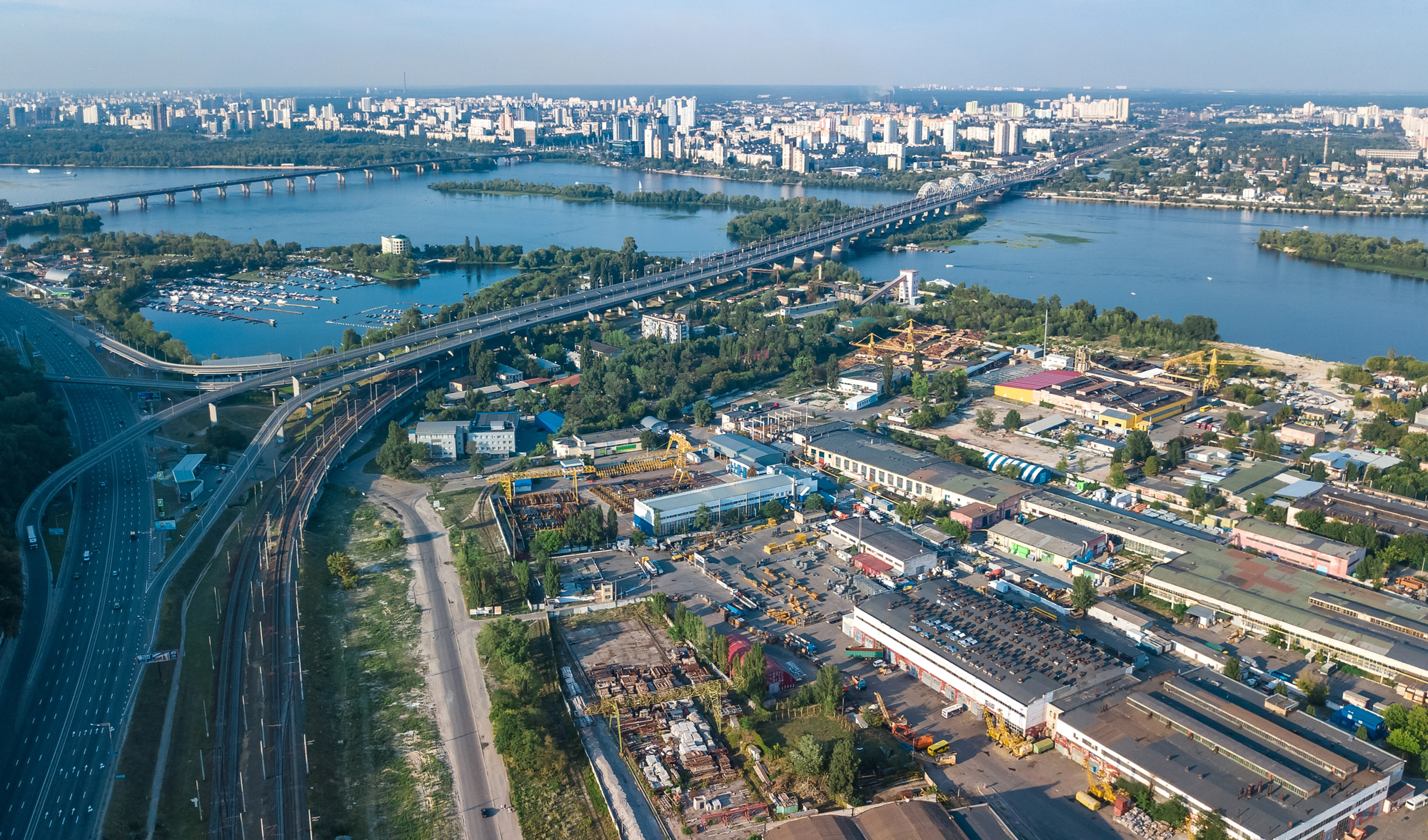In 2014-2015, the Ukrainian economy fell by almost 12%. In the third quarter of 2019, Ukraine’s economy grew by 4.2%. The government has declared the goal of 40% economic growth over the next 5 years.
We often hear this dry statistics in the media, but we do not always fully understand its meaning. What does it mean when the economy grows or falls? Does an average Ukrainian really feel it?
In this article, VoxCheck and Ukrainian Radio explain what economic growth is, how it is measured, what it affects, and whether it has any relevance for Ukrainians. We have also refuted the most common myths and manipulations on this subject and compiled a list of official and credible sources on the state of the economy.
What does economic growth mean and how does it impact Ukrainians?
Economic growth shows an increase in output in the economy. This, in turn, leads to improved quality of life, increased incomes and improved working conditions.
The rapid growth of the economy creates demand for labor, whose supply is stable, and even because of labor migration and the demographic crisis.
This leads to a rapid increase in salaries. Besides, due to higher taxes and contributions to the Pension Fund, the state has the opportunity to increase pensions, social benefits and salaries of state employees.
A country whose economy is steadily growing looks more reliable to foreign investors, international lenders and other countries. This opens up new markets, new opportunities for attracting resources, including credits, for the country.
But all this is possible because of real economic growth, not nominal growth. The nominal growth of the economy shows an increase in production at current prices. While real growth takes changes in prices into account and thus shows how much more goods and services are being produced in the country.
So, when we say that the economy of Ukraine grew by 4.2% in the third quarter of 2019, or that we want to grow by 7% a year and achieve economic growth by 40% in the next 5 years, we mean the real growth.
How to measure economic growth?
There are several ways of measuring economic growth. We can measure real GDP growth. There are nominal and real GDP. Nominal GDP is an integrated indicator of a country’s economic development, which characterizes the output of resident activity within the country’s economic territory and is measured by the aggregate value of the goods and services produced by them for end use.
Real GDP is a nominal deflator-adjusted GDP. The deflator is a factor that takes into account changes in prices for all goods in the economy. The deflator includes a much wider range of goods and services than the consumer price index used to determine inflation (which we have already discussed in the previous article).
However, some economists tend to think that it’s better to analyze economic growth through GDP per capita. This indicator alone means higher well-being.
Growth rates of the economy from year to year are accumulated, not added. That is, 7% growth over five years is not equal to 5 × 7% = 35%, since 7% in the second year is “upgraded” to 7% growth in the first year, 7% in the third year is “based” on 7% in the first and the second year, etc.
What are the factors that influence Ukraine’s economic growth?
There are usually two main groups of factors in play: factors of extensive and intensive growth. Extensive factors are all the quantitative factors: for example, to increase the production of goods and services in the country, we need to use more labor force, attract more investments, open more factories etc. The factors of intensive growth are qualitative factors. In the context of Ukraine’s economic growth, we should discuss them in detail.
Economic growth is influenced by the quality and productivity of the workforce, the innovations used in manufacturing, the state of property rights protection, the transparency of the judicial system and legislation, the investment and business climate, the state of the banking and financial sectors, and a range of other factors.
In addition, external factors may influence the state of the economy and, accordingly, economic growth. This could be the global financial crisis (as in 2008-2010), significant changes in world, mainly commodity markets, or even changes in the international political arena.
So how can Ukraine grow 7% a year?
Experts name various factors that could help the Ukrainian economy grow faster.
For example, investment banker Serhiy Fursa believes that the reform steps announced by the new government will help accelerate economic growth. However, this will be possible under the rule of law and continued judicial reform. He also considers the legalization of the amber mining business to be a positive step, which will help with the shadow economy.
Senior economist at the Case-Ukraine Center for Socio-Economic Research Volodymyr Dubrovskyi also agrees that without further reform of the judicial and law enforcement systems, all efforts to reform other areas will be futile.
The government expects that the opening of the agricultural land market will help accelerate economic growth. According to World Bank forecasts, lifting the moratorium on agricultural land sale and launching the market will transform into 0.5-1.5% annual growth acceleration.
Yuriy Gorodnichenko believes that an economic miracle in Ukraine is possible. Unfortunately, the historical experience is unequivocal: it is unlikely without dramatic changes in the management of Ukraine’s economy or the global economic boom. Economic science does not make clear recommendations that would absolutely guarantee enormous growth. If it were easy, we would not have poor countries. But we know that economic growth can be aided by government policy (property rights protection, combating populism, creating a land market, decentralizing decision-making, supporting macroeconomic stability, etc.).
Who manipulated and lied about Ukraine’s economic growth and how exactly?
There are several most common statistical data manipulations concerning the economic growth.
Comparing GDP in dollars, not the real GDP
Vadym Rabinovych on GDP contraction, 01/08/18 (07:18-07:24)
Manipulation
“The GDP of the country, that we all we live off, decreased by 63.5% in 4 years.”
Rabinovych means the nominal GDP in US dollars, which decreased by 27% in 2014, decreased by 31% in 2015, and increased in 2016 and 2017 by 2% and 17%, respectively. The reduction over 4 years is 39%, but it was caused by the rapid devaluation of the hryvnia in 2014-2015. You need to look at inflation-adjusted national currency GDP, real GDP.
According to the IMF, it decreased by 6.6% in 2014, by 9.8% in 2015, increased by 2.4% and by 2.5% respectively in 2016 and 2017. Therefore, the reduction in 4 years is 11.6%, not 63.5%.
Mixup between the nominal and real GDP
Volodymyr Hroisman on economic growth, 22/08/18 (23:27-23:39)
Manipulation
“Today we have 3.6% growth in the second quarter. This is about 500 billion UAH of products and services that will be produced by Ukrainian hands and Ukrainian industry.”
The nominal GDP for 2017 is UAH 2 983 billion. If it rises by 3.6% at comparative prices, it will increase to UAH 3 090 billion or by UAH 107.4 billion. This is real GDP growth.
The IMF forecasts Ukraine will have $119.3 of nominal GDP in 2018, or UAH 3,495 trillion at the rate of UAH 29.3/USD. Then nominal GDP growth will amount to about UAH 542 billion.
However, the manipulation is that Groysman compares real GDP growth to nominal GDP.
Unprecedented economic growth
Andrii Bohdan, 06/09/2019 (45:25-45:37)
False
“You know that GDP in the second quarter is 4.7%, which has never been happened in Ukraine before.”
According to the State Statistics Service, real GDP increased by 4.6% in the second quarter of 2019. However, this is not the highest figure for all years of Ukraine’s independence. In particular, the same level of GDP growth was recorded in Q4 2016. And in 2011, GDP grew by an average of 5.5% a year.
Where can you learn about Ukraine’s economic growth?
The most comprehensive source for GDP and economic growth is the State Statistics Service of Ukraine. Here you can find information on nominal and real GDP over the last 10 years, through all the years of independence, and a deflator.
The National Bank of Ukraine also prepares reports on economic growth and analyzes the factors that accelerate or slow it down. More on this in Macroeconomic reviews. Besides, the NBU makes economic growth forecasts. It is also covered in the Inflation Reports.
The Ministry of Economic Development, Trade and Agriculture prepares a forecast of nominal and real GDP and also analyzes the factors that impact the economic growth.
The World Bank website provides information on nominal and real GDP both in Ukraine and all over the world. The World Bank counts GDP in dollars. The World Bank’s website also shows GDP per capita.
The International Monetary Fund gives similar data and forecasts.
The following experts have an expertise on economic growth and the factors that influence it:
- Yuriy Gorodnichenko, Associate Professor, Department of Economics, University of California Berkeley;
- Hlib Vyshlinsky, Executive Director of the Center for Economic Strategy;
- Olena Bilan, chief economist at Dragon Capital.
Photo: depositphotos.com/ua
Attention
The authors do not work for, consult to, own shares in or receive funding from any company or organization that would benefit from this article, and have no relevant affiliations





